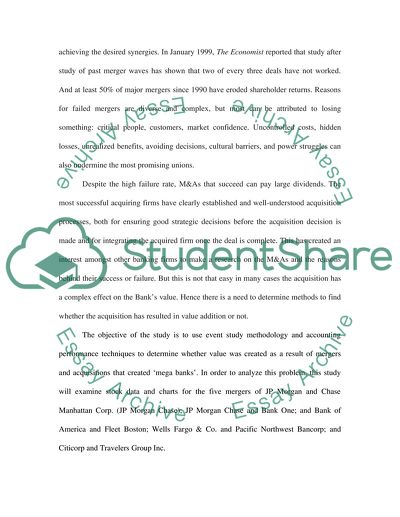Cite this document
(“Value Creation - Mergers and Acquisitions in the Banking Industry Thesis”, n.d.)
Value Creation - Mergers and Acquisitions in the Banking Industry Thesis. Retrieved from https://studentshare.org/finance-accounting/1502979-value-creation-through-mergers-and-acquisitions-in-the-banking-industry-a-case-study-of-five-mergers-acquisitions-in-banking-industry
Value Creation - Mergers and Acquisitions in the Banking Industry Thesis. Retrieved from https://studentshare.org/finance-accounting/1502979-value-creation-through-mergers-and-acquisitions-in-the-banking-industry-a-case-study-of-five-mergers-acquisitions-in-banking-industry
(Value Creation - Mergers and Acquisitions in the Banking Industry Thesis)
Value Creation - Mergers and Acquisitions in the Banking Industry Thesis. https://studentshare.org/finance-accounting/1502979-value-creation-through-mergers-and-acquisitions-in-the-banking-industry-a-case-study-of-five-mergers-acquisitions-in-banking-industry.
Value Creation - Mergers and Acquisitions in the Banking Industry Thesis. https://studentshare.org/finance-accounting/1502979-value-creation-through-mergers-and-acquisitions-in-the-banking-industry-a-case-study-of-five-mergers-acquisitions-in-banking-industry.
“Value Creation - Mergers and Acquisitions in the Banking Industry Thesis”, n.d. https://studentshare.org/finance-accounting/1502979-value-creation-through-mergers-and-acquisitions-in-the-banking-industry-a-case-study-of-five-mergers-acquisitions-in-banking-industry.


